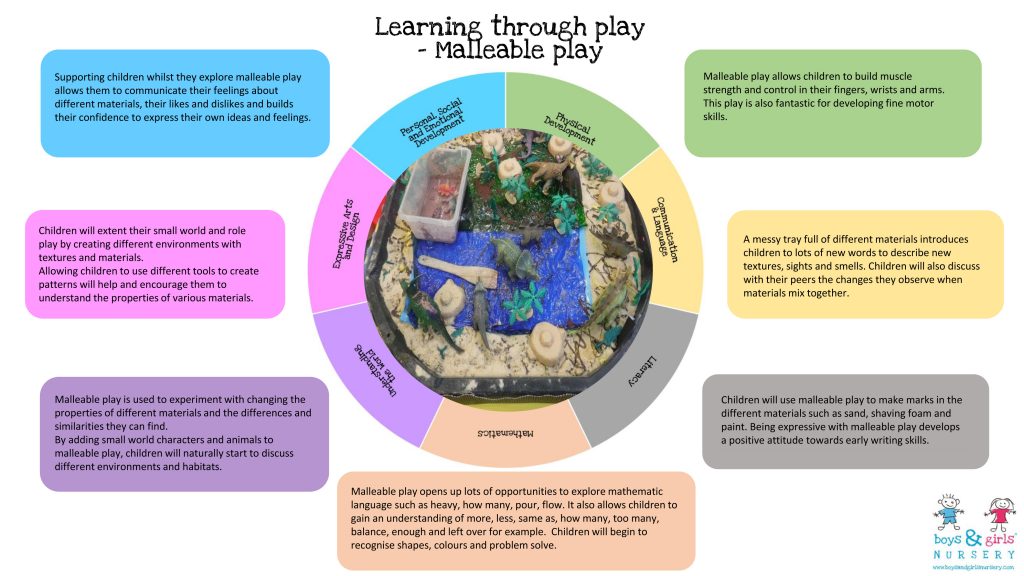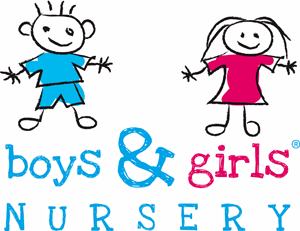Blog - Nursery Talk

Learning through play – The Boys & Girls Nursery way: Malleable play
Research shows that the most effective way for children to learn is through play. Play underpins the Early Years Foundation Stage (EYFS). Each area of learning and development must be implemented through planned, purposeful play and through a mix of adult-led and child-initiated activity.
At Boys & Girls Nursery we understand that for children to learn through play they need to feel safe, secure and confident. We provide a fun and stimulating environment which offers a wide range of opportunities to inspire young children in our care. Our continuous development allows children to grow in all areas of the EYFS ensuring they are school ready.
Here are some examples showing how we encourage children to learn through malleable play:
- Personal, Social and Emotional Development
Supporting children whilst they explore malleable play allows them to communicate their feelings about different materials, their likes and dislikes and builds their confidence to express their own ideas and feelings. - Physical Development
Malleable play allows children to build muscle strength and control in their fingers, wrists and arms. This play is also fantastic for developing fine motor skills. - Communication and Language
A messy tray full of different materials introduces children to lots of new words to describe new textures, sights and smells. Children will also discuss with their peers the changes they observe when materials mix together. - Literacy
Children will use malleable play to make marks in the different materials such as sand, shaving foam and paint. Being expressive with malleable play develops a positive attitude towards early writing skills. - Mathematics
Malleable play opens up lots of opportunities to explore mathematic language such as heavy, how many, pour, flow. It also allows children to gain an understanding of more, less, same as, how many, too many, balance, enough and left over for example. Children will begin to recognise shapes, colours and problem solve. - Understanding the World
Malleable play is used to experiment with changing the properties of different materials and the differences and similarities they can find. By adding small world characters and animals to malleable play, children will naturally start to discuss different environments and habitats. - Expressive Arts and Designs
Children will extent their small world and role play by creating different environments with textures and materials. Allowing children to use different tools to create patterns will help and encourage them to understand the properties of various materials.

